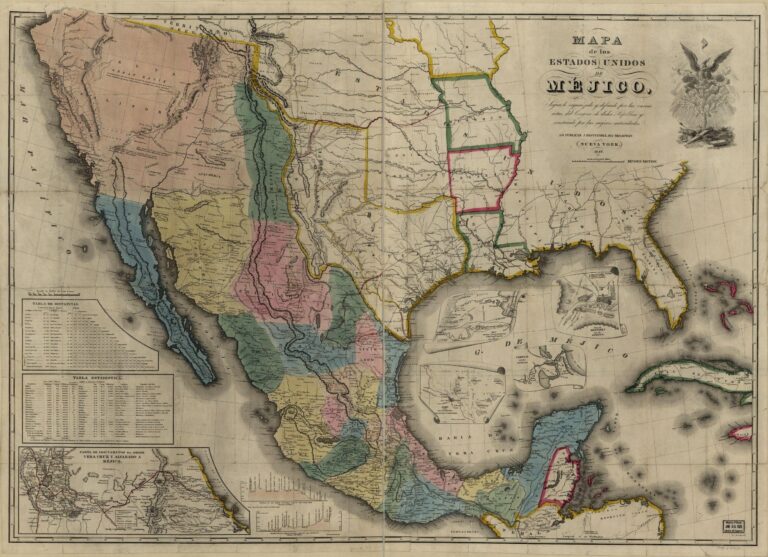Mexican banks are increasingly establishing their presence in Texas, signaling a growing cross-border financial integration between the two regions. This expansion reflects a strategic move to tap into the sizable Hispanic population and burgeoning economic opportunities in the Lone Star State. As these institutions deepen their footprint, Texas consumers and businesses may gain access to a broader range of banking services tailored to their unique needs. This article explores the recent developments behind this trend, its drivers, and potential impacts on the local financial landscape.
Mexico Banks Strengthen Presence in Texas with Strategic Branch Openings
Mexican financial institutions are accelerating their expansion into the Texas market, opening new branches in key metropolitan areas to better serve a growing base of binational customers. This expansion is driven by increasing economic ties and the demand for cross-border banking solutions, positioning these banks as vital partners for both personal and business clients in the region. Notably, these institutions prioritize offering bilingual services and tailored financial products that cater to the unique needs of immigrant communities and transnational entrepreneurs.
Industry experts highlight several advantages that Mexican banks bring to Texas, including:
- Enhanced cross-border transaction capabilities facilitating smoother remittances and trade financing
- Competitive loan and credit offerings designed with an understanding of Latino business models
- Community-focused banking practices fostering strong relationships through locally adapted services
With an eye on future growth, these banks are poised to reshape the local financial landscape by integrating cultural insight with robust regulatory compliance.
| Bank | New Branch Location | Key Service Highlight |
|---|---|---|
| Banco Azteca | Houston – Downtown | 24/7 Bilingual Customer Support |
| Banregio | San Antonio – Alamo Heights | SME Loan Programs |
| Santander México | Dallas РUptown | Cross-border Digital Banking |
Economic Impact of Mexican Financial Institutions on Texas Communities
As Mexican banks establish a stronger presence in Texas, the ripple effects on local economies are becoming increasingly evident. These institutions are not only facilitating enhanced financial services for the growing Hispanic population but are also driving significant investment in community development projects. From small business loans that empower entrepreneurs to affordable mortgage options that stimulate housing markets, the expansion has made it easier for residents to access capital that was previously limited or unavailable through traditional U.S. banking channels.
The economic contributions extend beyond consumer banking, with Mexican financial firms partnering with local governments and organizations to create job opportunities and improve infrastructure. This collaboration supports diverse sectors including retail, real estate, and education. Here’s a snapshot of key areas benefiting from this cross-border banking influence:
- Small Business Growth: Increased funding for minority-owned enterprises.
- Housing Market: Enhanced access to bilingual mortgage services.
- Employment: Creation of new jobs within financial services and related industries.
- Community Programs: Financial literacy initiatives targeting underserved populations.
| Sector | Impact | Example |
|---|---|---|
| Business Financing | +25% loan approval rates | Startups in Dallas |
| Residential Loans | Rise in homeownership | San Antonio suburban areas |
| Employment | 200+ new jobs created | Houston financial centers |
| Community Support | Financial education programs | El Paso outreach |
Regulatory Challenges and Opportunities for Cross-Border Banking Expansion
Expanding banking operations across borders invites a complex matrix of regulatory compliance requirements that Mexican banks must navigate carefully as they establish footholds in Texas. U.S. federal and state banking regulations demand rigorous adherence to anti-money laundering (AML) protocols, capital adequacy standards, and consumer protection laws, often differing significantly from Mexican frameworks. Coordinating with regulatory bodies such as the Federal Reserve, the FDIC, and Texas Department of Banking presents both challenges and opportunities to align practices. Moreover, cross-border data privacy and cybersecurity compliance introduces an evolving layer of scrutiny that banks must proactively address to sustain trust and operational integrity in both markets.
On the opportunity front, the U.S.-Mexico banking corridor offers strategic advantages that extend beyond regulatory hurdles. Mexican banks can capitalize on the growing Hispanic customer base in Texas by offering tailored financial products and leveraging cultural connections to build loyalty. Enhanced regulatory clarity on cross-border capital flows and trade finance facilitates smoother transactions, allowing banks to support expanding bilateral commerce and remittance channels. Below is a summary of key regulatory elements impacting expansion:
| Regulatory Focus | Mexico | Texas/USA |
|---|---|---|
| Capital Requirements | Basel III minimums | Federal Reserve standards |
| AML & KYC | FINSA regulations | Bank Secrecy Act |
| Data Privacy | Federal Law on Protection of Personal Data | Gramm-Leach-Bliley Act |
| Consumer Protection | CONDUSEF oversight | CFPB regulations |
Recommendations for Texas Customers Navigating New Services from Mexico-Based Banks
As Mexico-based banks extend their footprint into Texas, local customers should approach these new services with careful consideration. Familiarity with cross-border financial regulations and banking policies is crucial, especially concerning currency exchange fees, fund transfer limits, and international compliance standards. Customers are encouraged to:
- Verify the bank’s licensing and regulatory adherence both in Texas and Mexico.
- Understand fee structures related to international transactions.
- Utilize bilingual customer support options to clarify terms and conditions.
To aid in evaluating these new offerings, here’s a comparison of key service features to watch for:
| Service Aspect | What to Check | Potential Benefit |
|---|---|---|
| Cross-Border Transfers | Transfer fees, processing time | Faster international payments with lower costs |
| Account Access | Mobile app usability, bilingual interface | Convenient 24/7 management from either country |
| Customer Support | Availability in English and Spanish | Clear communication and issue resolution |
By staying informed and proactive, Texas customers can make the most of these expanding financial options without encountering unexpected hurdles.
To Conclude
As Mexico-based banks continue to deepen their presence in Texas, this expansion reflects broader trends in cross-border economic integration and the growing financial needs of Hispanic communities. With competitive offerings and culturally attuned services, these institutions are poised to play a pivotal role in the state’s banking landscape. Observers will be watching closely to see how this growth influences market dynamics and customer choices in the coming years.




